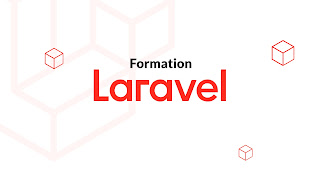Introduction:
Laravel is a powerful and popular PHP framework for building web applications. It provides a clean and elegant syntax while also offering robust features for web development. In this article, we'll explore the fundamentals of Laravel and guide you through setting up your first Laravel project.
What is Laravel?
Laravel is an open-source PHP framework that follows the MVC (Model-View-Controller) architectural pattern. It was created by Taylor Otwell and released in 2011. Laravel simplifies the development process by providing expressive syntax, a rich set of features, and tools for common tasks like routing, authentication, caching, and more.
Setting Up Laravel:
Before you start with Laravel, you need to have PHP and Composer installed on your system. Composer is a dependency manager for PHP that Laravel relies on for managing its dependencies. Once you have PHP and Composer installed, you can create a new Laravel project using the Composer create-project command:
bashcomposer create-project --prefer-dist laravel/laravel my-project
Replace my-project with the name of your project directory.
Understanding the Directory Structure:
Once you've created a new Laravel project, you'll notice a well-organized directory structure. Here's a brief overview of the key directories:
app: Contains the application's models, controllers, and other PHP classes.config: Contains configuration files for various aspects of the application.public: The public directory is the web server's document root and contains the front controllerindex.phpand other publicly accessible files.resources: Contains views, language files, and other resources used by the application.routes: Contains route definitions for the application.storage: Contains files generated by the framework such as logs, cache, and session files.vendor: Contains Composer dependencies.database: Contains database migrations and seeders.
Routing:
Routing is how Laravel determines which code to execute based on the URL. Routes are defined in the routes/web.php file for web routes and routes/api.php for API routes. Here's an example of a basic route definition:
phpRoute::get('/hello', function () {
return 'Hello, Laravel!';
});
Views:
Views are responsible for presenting the application's user interface. Laravel uses the Blade templating engine to create dynamic views. Blade templates use the .blade.php file extension and allow you to include PHP code within HTML. Here's an example of a Blade template:
php<!-- resources/views/welcome.blade.php -->
<!DOCTYPE html>
<html>
<head>
<title>Welcome</title>
</head>
<body>
<h1>Hello, {{ $name }}</h1>
</body>
</html>
Controllers:
Controllers handle user requests and interact with models to retrieve and manipulate data. You can generate a new controller using the Artisan command-line tool:
bashphp artisan make:controller UserController
Models:
Models represent the data in your application and interact with the database. You can create a new model using the Artisan command-line tool:
bashphp artisan make:model User
Database Migration and Seeders:
Laravel provides a convenient way to manage database schema and seed data using migrations and seeders. Migrations allow you to define database schema changes in code, while seeders allow you to populate the database with initial data. Here's an example of creating a migration and seeder:
bashphp artisan make:migration create_users_table php artisan make:seeder UserSeeder
Conclusion:
Laravel is a powerful PHP framework for building web applications quickly and efficiently. In this article, we covered the basics of Laravel including setting up a new project, understanding the directory structure, routing, views, controllers, models, and database migration and seeders. This should provide you with a solid foundation to start building your Laravel applications. Happy coding!

Commentaires
Enregistrer un commentaire